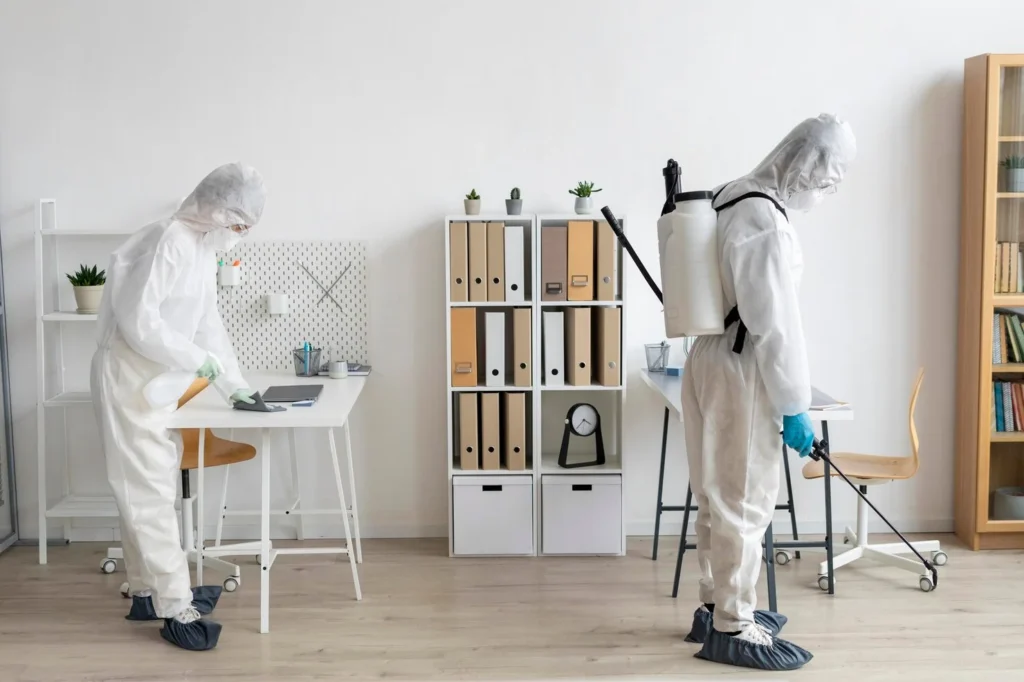Mold in your home can be more than just a visually unappealing problem; it can also present significant health hazards. Extended exposure to mold can result in respiratory issues, allergies, and severe infections. Given these health risks, it’s essential to recognize the significance of mold remediation. Effective mold remediation is vital for preserving your home’s structure and ensuring the well-being of its occupants.
A significant concentration of mold spores might adversely affect indoor air quality. Excess moisture trapped in the home creates an ideal environment for mold to flourish. This is why utilizing services such as those provided by Pure Restore can be crucial in maintaining a healthy living environment. By promptly addressing the mold problem, you can avoid costly repairs and protect your family’s health.
The Health Risks of Mold
Significant health hazards can arise from mold exposure, especially for people with allergies, weaker immune systems, or respiratory disorders. Inhaled mold spores can cause respiratory problems such as asthma episodes and allergic responses. In more extreme situations, extended contact with some mold species—like black mold—can result in infections and long-term respiratory problems. Moreover, mold can develop mycotoxins, harmful substances that, if consumed or inhaled over time, can result in neurological disorders and other major health concerns. Mold issues need to be treated promptly and entirely to protect indoor air quality and public health.
Steps for Effective Mold Remediation
To combat mold effectively, you should follow these key steps:
- Identify the Source: To address mold issues, first identify the source of moisture, such as leakages, high humidity levels, or inadequate ventilation. This will guarantee a healthier atmosphere by assisting in identifying the underlying reason and averting further mold problems.
- Containment: To prevent mold spread, seal affected areas with plastic sheeting and duct tape, wear protective clothing, and use air filters. Containment is crucial, especially for black mold, as it prevents cross-contamination and ensures the safety of all living organisms.
- Removal: To remove mold from surfaces, use specialized cleaners and disinfectants, and seek professional help in severe cases. Experts can eliminate mold spores, reducing the risk of regrowth. Do not use bleach, as it can exacerbate the issue and pose health risks.
- Drying and Cleaning: To prevent mold growth, thoroughly dry and clean affected areas using dehumidifiers and fans. Vacuum with HEPA filters and wipe surfaces with antifungal solutions. This process removes residual mold and moisture, creating an inhospitable environment for future growth.
- Repair and Restoration: To restore your home to its original state, replace damaged materials like drywall, insulation, and flooring. If necessary, discard damaged materials. Seal repairs and paint with mold-resistant coatings to prevent future infiltration.
Preventive Measures Against Mold
Prevention is always better than cure. To keep your home mold-free, consider the following measures:
- Control Humidity Levels: Use dehumidifiers and air conditioners to maintain low humidity levels, especially in basements and other moisture-prone areas. To inhibit mold growth, keep humidity below 60%. Regularly empty and clean dehumidifiers to keep them functioning well.
- Ensure Proper Ventilation: Ensure that every area in your house has adequate ventilation, especially the bathrooms, laundry rooms, and kitchens, where moisture buildup is more common. Install and use exhaust fans effectively.
- Regular Inspections: Inspect areas like the basement, attic, and bathroom to catch mold problems early. Look for leaks, water stains, and musty odors indicating moisture problems.
- Repair Leaks Promptly: Fix any leaks in roofs, walls, or plumbing immediately to avoid moisture buildup. Caulk and seal windows, doors, and pipes to prevent water ingress. Regular maintenance of your home’s plumbing and roofing systems will go a long way in preventing mold.
- Use Mold-Resistant Products: Consider using mold-resistant drywall, paints, and caulks. These goods are made to withstand moisture and prevent the growth of mold. When renovating or building, choosing mold-resistant materials for bathrooms, basements, and kitchens adds an extra layer of protection against mold.







